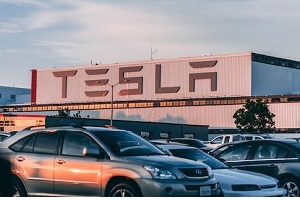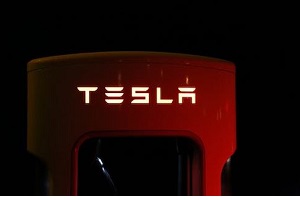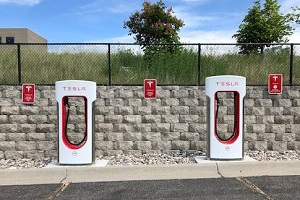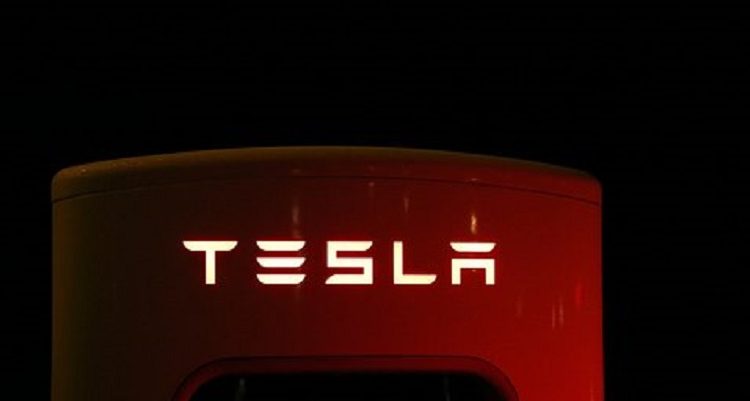Tesla Stock Decline
Why Tesla stock keeps falling
Tesla Stock:
An issue keeping the high-profile USA EV car maker’s rich owner up at night is whether it can maintain its pursuit of the title of largest automaker in the globe. With 1.31 million vehicles delivered to customers in 2021, Tesla managed to improve vehicle shipments by 40% every year. For the year, production increased 47% to 1.37 million.
This would have been a decent year for a corporation that hadn’t set such lofty expectations. Even though Tesla encounters difficulties and obstacles from across the world, Musk is compelled to achieve the unachievable goal of being the top carmaker in the world. Instead of the 405,000 vehicles that Elon Musk’s firm delivered to clients in December, market experts had predicted that there would be roughly 420,000 electric cars delivered.
Tesla shareholders, who had been caught off guard by Musk’s enormous growth claims, reacted badly to the missed goal, and the company’s shares dropped by about 14% after U.S. stock markets began recently. The corporation lost more than $900 billion (£750 billion) in value as a result, with shares trading at just over $106—roughly a quarter of what they were a year earlier. Analysts are now worrying about Tesla’s future amidst some worries that Musk is preoccupied with a new meltdown at Twitter, which he acquired for $44 billion the year before.

Source: Pexels.com
Despite the fact that Ford and General Motors proceed to be valued at $47 billion and $48 billion, respectively, and Tesla remains to be valued at $333 billion, the conventional auto industry still produces and owns many more vehicles annually than the Tidal Wave of EV cars spending by Tesla in an effort to adapt its innovation. Up until this point, Musk has been backed by investors who had faith in his ability to someday produce the best-selling automobiles on the planet. That conviction is probably going to be challenged if GDP slows down more.
“The concern is that [the current valuation] is well ahead of everybody, which means equities face many risks of contraction going forward,” says Adam Crisafulli, industry analyst at Vitalknowledge. was “strong,” but shareholder dividend expansion has slowed noticeably over the previous two years.
He asserts that they now probably will compromise on quality. “Tesla will need to penetrate farther down the market, which might impact margins and earnings,” Crisafulli said. “To reach the 50 percent [car delivery] growth forecast.”
The company’s output figures for the last month of 2022, according to Dan Ives of Wedbush Securities, are “obviously nothing exceptional.” In a letter to investors on Tuesday, he stated that “Total demand for Tesla is starting to slow down a bit” and that “the business needs to react and decrease pricing, notably in China, which remains important to the growth narrative.” Competitor threats are growing, and the sophisticated technology that underpins electric cars is becoming into a focus of great interest and investment.
During 2021, General Motors, the USA EV car maker responsible for Chevrolet & GMC, invested $19 billion of its $41.8 billion in sales on R&D. Ford, on the other extreme, spent 7.6 billion dollars, or 5.6% of it’s own $136 billion in 2021 earnings, on R&D. Tesla spent $2.6 billion on R&D in 2021, which is only 4% of its $53.8 billion in revenue this year.

Source: Pexels.com
While noting that the USA EV car manufacturer doesn’t have to divide its research and development money between conventional engines and electric motors, supporters of Tesla claim that the company’s research investment per vehicle is far more than that of its American rivals. But Tesla’s battle for supremacy isn’t just failing in the field of research and development. He has already fallen behind in his native nation of electric vehicles. After overtaking the American manufacturer in customer deliveries last year, Chinese competitor BYD temporarily took the world’s top spot for electric vehicles, but it dropped behind Tesla in the second half of the year.
Elon Musk, CEO of Tesla (NASDAQ: TSLA), momentarily lost his title as the richest man living on December 7 as TSLA shares continued to fall.
The new temporary riches champion is Bernard Arnault, whose parents owned the luxury goods group LVMH (OTCMKTS:LVMUY), according to Forbes. The value of Tesla has decreased by 24% since Musk purchased Twitter. Investors are unsure if this is an exception or the beginning of a more rapid decline. Tesla has a market value of $538 billion and is now selling at about $170 per share.
The Tesla Slowdown
Tesla’s difficulties started in China, where the business chose to defer recruiting and decrease shifts within its most productive facility, the Shanghai factory. According to reports, the nation also reduced costs in China. According to an expert, Tesla is also giving American customers who purchase the car this month a $3,750 incentive. The analyst came to the conclusion that Tesla “appears to have a rising demand problem.” Tesla stock problems might only become worse if the company turns into “just another automobile manufacturer.” This is due to the fact that other car companies, such as General Motors (NYSE:GM) and Toyota Motor (NYSE:TM), are trading below the value of their respective sales. Even at its present low, Tesla is trading for nine times its annual income.
The most recent quarterly financial reports from corporations provide the explanation. Tesla’s third-quarter sales increased by 56% year over year, and 15% of its revenue was converted to net profitability. With a 14.4% increase in sales, Toyota converted 7.7% of its revenue into net profits. The net income for GM increased by 56% year over year to 7.9% of sales. Tesla’s value should equal other automakers’ if its sales growth and margins are comparable. Tesla is valued more than Microsoft (NASDAQ:MSFT), which is also trading for nine times what it is worth, due to aftermarket income, which includes software upgrades, and the fact that automobiles tend to sell themselves.
Although its shipments of 594,000 cars (rather than the freight trucks and buses it builds) fell well short of Tesla’s shipments of 936,000 in the same year, the Warren Buffett-backed business nonetheless sold 1.86 million electric vehicles in 2021, largely to Chinese customers. Tesla is becoming more and more reliant on China, particularly its Shanghai manufacturing, which aids in the company’s ability to serve one of the world’s largest marketplaces. However, Tesla’s capacity to run the facility was significantly hampered by the Chinese government’s unsuccessful zero-Covid strategy in 2022, causing production to cease, including a stoppage in December when the virus reappeared.

Source: Pexels.com
In the US, Tesla started giving aggressive subsidies of up to $7,500 on its electric vehicles in 2022 after a year marred by economic difficulties, increasing loan rates that tempered customer excitement, and industry rivalry. Musk’s December warning to stay away from “stock market hysteria” came as no surprise.
Tesla is still making an effort to expand, despite stock price issues and analysts’ and investors’ louder and louder objections. Musk is a shrewd businessman who has managed to keep Tesla’s cash flow favorable through 2021. As of the end of September, the firm had a total market value of $74 billion and a war chest of $12 billion. The net worth figure rose from $57 billion the previous year.
Ultimately, Tesla and market observers believe that until 2023, gravity will exert significant pressure on Tesla. Although Musk has a history of disproving detractors, many eyes will be watching the company’s financial reports this month. If the issue with the car delivery statistics is the same, Tesla runs the risk of blending in with the rest of the global car racing field.
So what
Once the coronavirus returned to Shanghai, where Tesla’s Chinese Gigafactory is situated, the local authorities was obliged to announce a quarantine, which is when Tesla’s problems in China started. Tesla’s Shanghai plant’s manufacturing was halted in accordance with the quarantine, restarted, and then shut down once more at the end of the month.
Reuters recently revealed that this second shutdown has now lasted for more than two weeks in a row. Due to the downtime, Tesla’s production figures for February through March were essentially unchanged, with the number of EVs built in March falling by 18.5% over January’s 68,117.
Now what
Here’s why this concerns to Tesla shareholders and why it may offer a hint as to what will likely happen in the future. Chinese purchasers reportedly raced to place orders, citing worries that Tesla may boost prices further following price increases it announced in November and March due to increasing raw material costs. As a result, when the Shanghai facility reopens, you can anticipate that backlogs will be swiftly addressed, causing a surge in Tesla production and deliveries that might start as early as this year. But if purchasers are purchasing primarily to avoid anticipated price increases, then those orders, manufacture, and shipments are probably going to drive EV sales that would have otherwise happened in May or later.
Outcome: Once the lockdowns around Shanghai are lifted, you may anticipate Tesla’s Chinese sales to increase, but they’ll probably start to decline again shortly after. Because of this, it will be challenging for long-term investors to identify a particular pattern in Tesla sales in China.
What Happens Next for TSLA Stock?
Tesla won’t provide findings once more until January 25. When he last reported in October, he mentioned a sizable stock of finished automobiles on Shanghai’s ports, which is thought to be a sign of future expansion. It’s a very long way to go if they’re seen as a burden, as they would be for GM. Tesla stock has decreased significantly. The stock price of the firm peaked in 2022 at over $400; since then, TSLA has fallen as low as $104.65 per share. Over the course of the year, falling stock prices result in billions of dollars in value losses. Yesterday, January 3, 2023, at the close of business, TSLA was trading at $108.06. The electric car firm is undoubtedly not aided by the current economic situation. However, there are other factors at play that are also causing Tesla’s stock values to decline. Here is a deeper look at some of the things that are bringing down the price of Tesla.
Musk’s Twitter takeover
Elon Musk purchased Twitter following protracted talks. He took over as CEO after purchasing the business and began implementing significant platform modifications right away. The changeover of Twitter under Musk’s leadership was far from seamless. He started considerable downsizing initiatives as the new CEO. In addition, a lot of significant sponsors have left the platform. In other words, Twitter is losing money, and Elon Musk has been working to turn the social media site around. One method Musk has been able to finance his Twitter activities is by selling Tesla stock. Musk raised around $3.6 billion via the sale of about 22 million Tesla shares in the middle of December. A short while later, he tweeted that he will stop selling any additional Tesla stock.
Many Tesla stockholders find it unsettling that Musk is investing so much time, effort, and resources on his plan to acquire Twitter. Additionally, a lot of individuals dislike the conflicts it sparks on Twitter. Musk has welcomed some of the suspended users and permitted the release of internal Twitter documents pertaining to COVID and the election. Because Musk is the CEO of Tesla, many people are reluctant to support the firm given the controversy around him. Notably, a recent survey revealed that among US self-described Democrats, preference for Tesla dropped to 10.4% from 24.8% the month prior.
Issues at Chinese factory
The manufacturer of electric vehicles announced in a report that it will run its Shanghai facility at reduced capacity until the end of December 2022. An essential part of Tesla’s operations is the Shanghai factory. Concerns about a potential decrease in customer demand arose after hearing about the output reduction. Many investors reacted by selling their stocks, as they would with any business facing a possible decline in demand.
About the Author
Ahsan Azam is the author who specializes in avionics as well as research writing. The author has a keen attention to detail and is focused on providing interesting content to the readers.
About Stone Age Technologies SIA
Stone Age Technologies SIA is a reliable IT service provider, specializing in the IT Solutions. We offer a full range of services to suit your needs and budget, including IT support, IT consultancy, remote staffing services, web and software development as well as IT outsourcing. Our team of highly trained professionals assist businesses in delivering the best in IT Solutions. Contact us for your IT needs. We are at your service 24/7.









Write a Comment